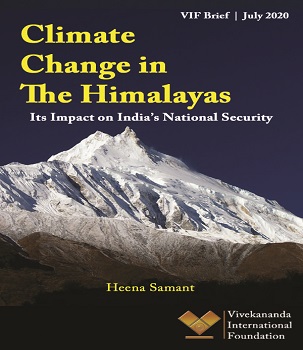
Human-induced climate change has led to unprecedented changes in the Arctic and Antarctic regions. Similarly, the Himalayan and its surrounding mountain ranges, also known as the ‘Third Pole’ is experiencing drastic changes due to global warming. These mountain ranges are the source of some of the most important rivers in Asia. They provide fresh water for millions of people living in the countries that form a part of these mountain ranges, including India. The Third Pole consists of a large number of glaciers, which are melting rapidly as a result of atmospheric warming, the impact of which is predicted to be disastrous. The rapid melting of the glaciers in the Himalayas may impact food, water, and energy security of India, which may result in further security challenges, thus threatening the national security of the country. India under its National Action Plan on Climate Change (NAPCC) has launched the National Mission for Sustaining Himalayan Ecosystems (NMSHE) to assess the health status of the Himalayan ecosystem. While these are some excellent initiatives taken by the government, there is a need to also focus on establishing a strong institutional regional mechanism to minimize the ongoing change and to include the security implications of climate change in it national security strategy.






Post new comment